Authentication > Integrate Okta SSO
Integrate OneLogin SSO
Want your team to access Tallyfy with their OneLogin credentials? You’ll set up SAML-based Single Sign-On (SSO) to handle authentication automatically. Takes about 30 minutes.
- OneLogin administrator account
- Tallyfy Professional or Enterprise plan
- SAML configuration values from Tallyfy Support
Here’s what you’ll do:
- Create a OneLogin SAML application connector
- Configure SAML settings in both systems
- Enable and test the SSO integration
This diagram shows the complete OneLogin-Tallyfy SAML setup and authentication flow.
- Configuration requires exchanging metadata between OneLogin and Tallyfy Support
- Users access through a special SSO URL after setup is complete
- New users are automatically provisioned on first login
-
Sign in to your OneLogin portal
-
Open the Administration menu
-
Navigate to Applications > Applications
-
Click Add App

-
Search for “SAML Test Connector”
-
Select SAML Test Connector (Advanced)
-
Edit the Display Name to “Tallyfy”
-
Click Save
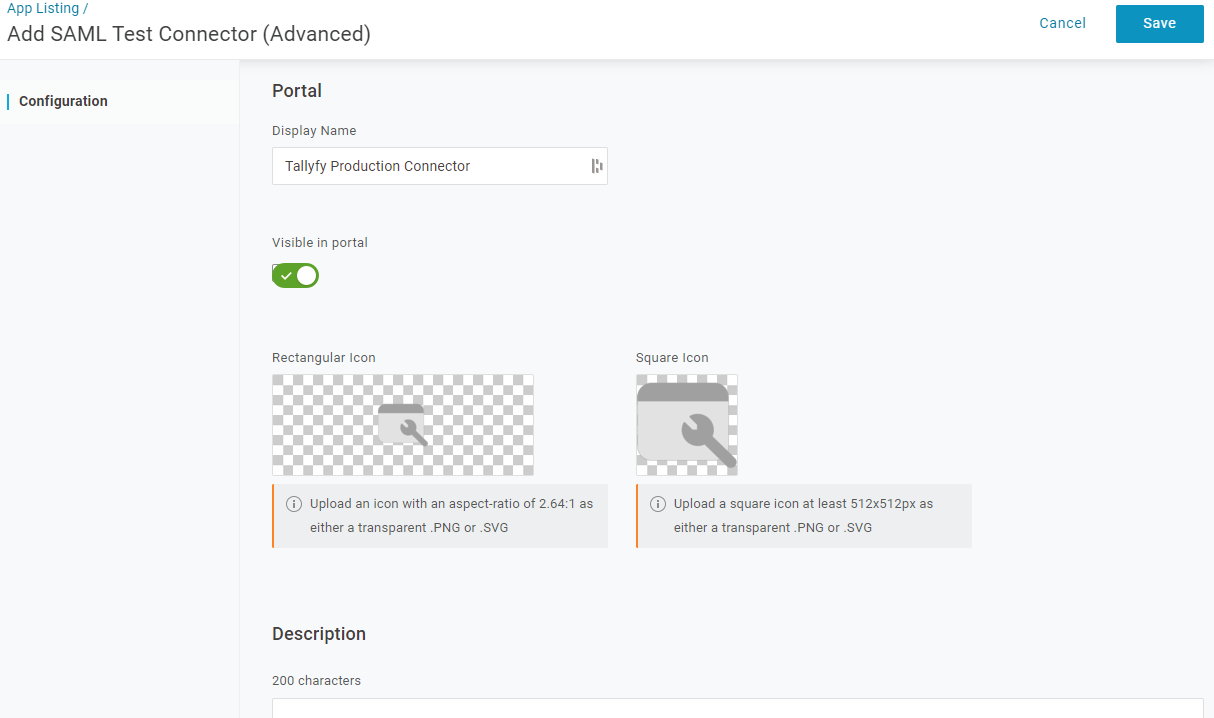
You’ll need Tallyfy’s default SAML values to configure OneLogin properly:
-
Contact Tallyfy Support to access your organization’s profile
-
Navigate to the Org Settings tab
-
Click Add Configuration Details
-
Locate the default SAML values section


-
Navigate to the Configuration tab in your OneLogin application connector.
-
Enter the Tallyfy SP ACS URL into the ACS (Consumer) URL field.
-
Enter the same URL into the Recipient field.
-
Enter the Tallyfy SP Entity ID into the Audience (EntityID) field.
-
Enter the ACS URL again into the ACS (Consumer) URL Validator field.
-
Click Save.
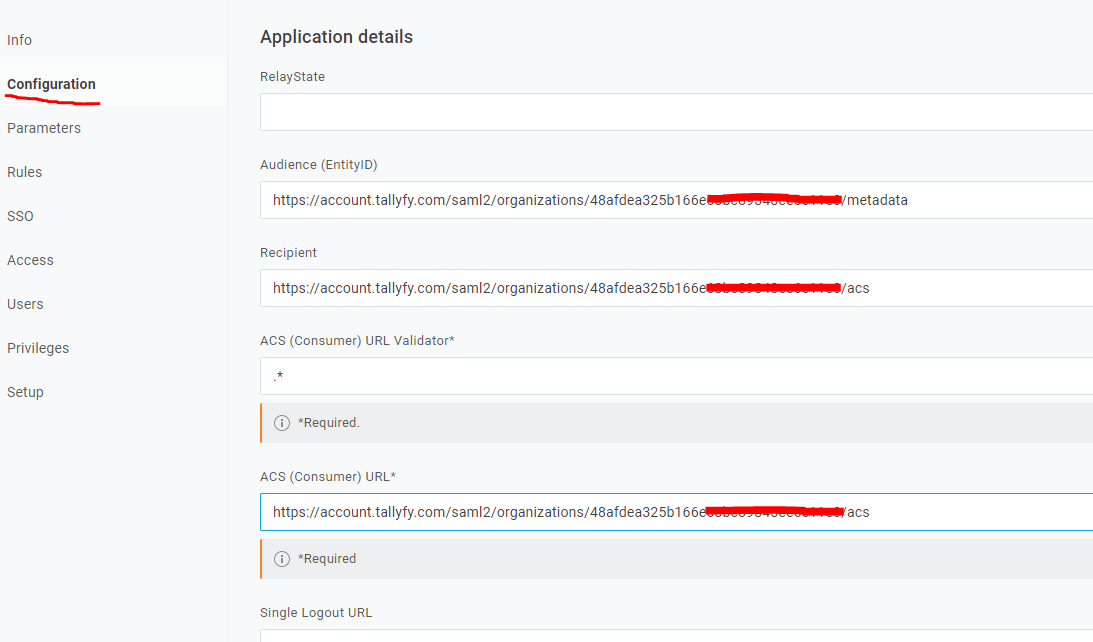
- Navigate to the Parameters tab in your OneLogin application.
- Add the three parameters detailed below.
Add these three parameters - and don’t forget to check the Include in SAML assertion box for each one:
| Parameter Name | Value |
|---|---|
| FirstName | First Name |
| LastName | Last Name |
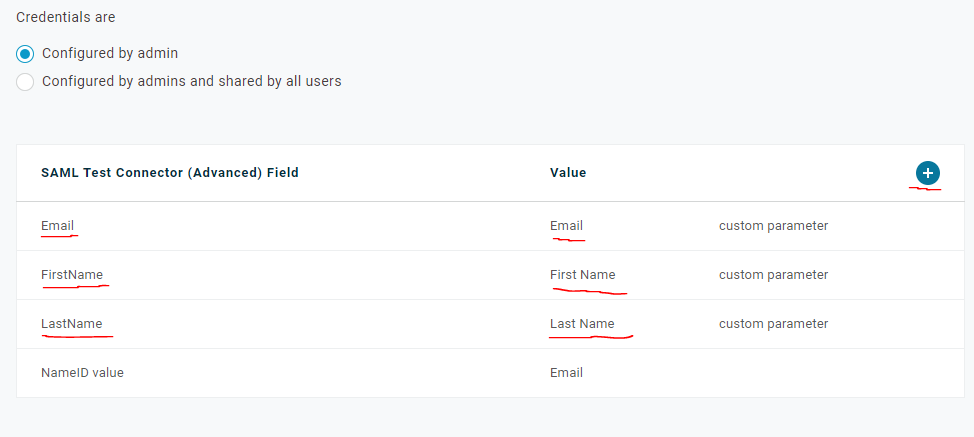
Here’s how to add each parameter:
-
Click the + button in the top-right corner of the parameters table.
-
Enter the parameter name (e.g., “Email”) and map it to the corresponding user attribute (Value field).
-
Check the Include in SAML assertion box.
-
Click Save.
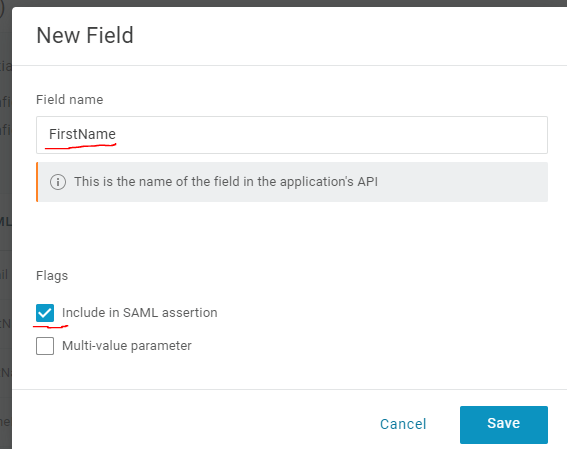
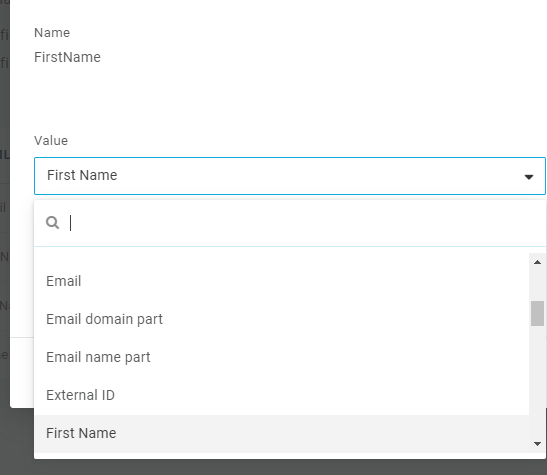
-
Navigate to the Access tab in your OneLogin application
-
Configure user access by selecting appropriate roles or users
-
In this example, we’re using the Default role to grant access
-
Click Save
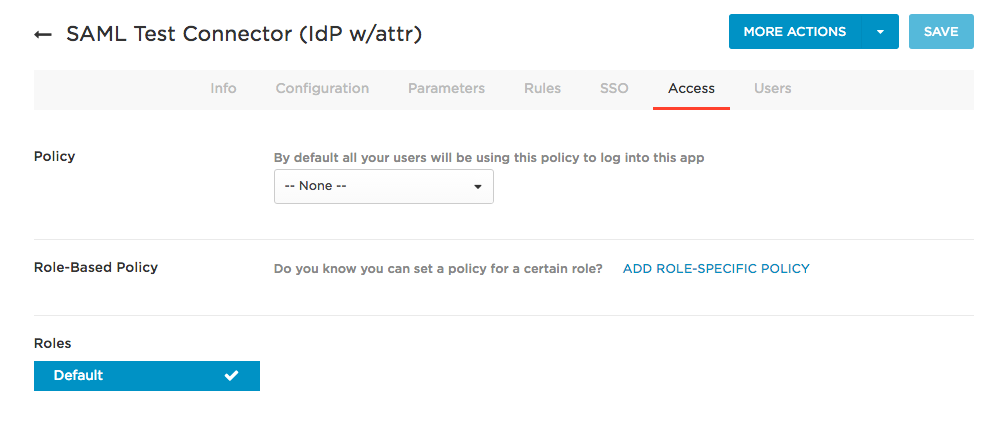
-
Navigate to the SSO tab in your OneLogin application.
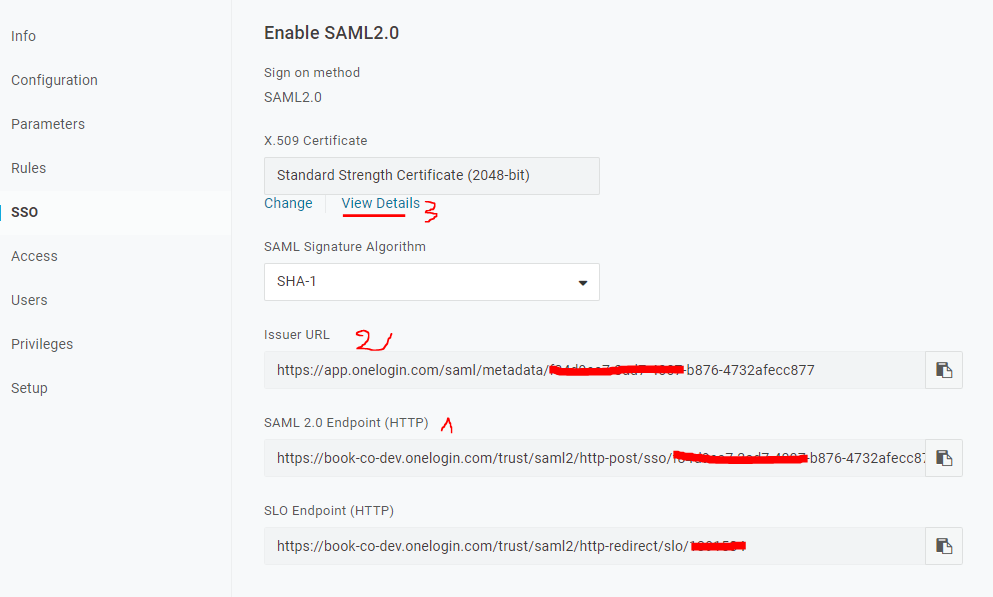
-
Note the SAML 2.0 Endpoint (HTTP).
-
Note the Issuer URL.
-
Note or download the X.509 Certificate.
-
Send the SAML 2.0 Endpoint (HTTP) to Tallyfy Support.
-
Send the Issuer URL to Tallyfy Support.
-
Send the X.509 Certificate to Tallyfy Support.
-
Tallyfy Support will configure these values in your organization’s SAML settings.
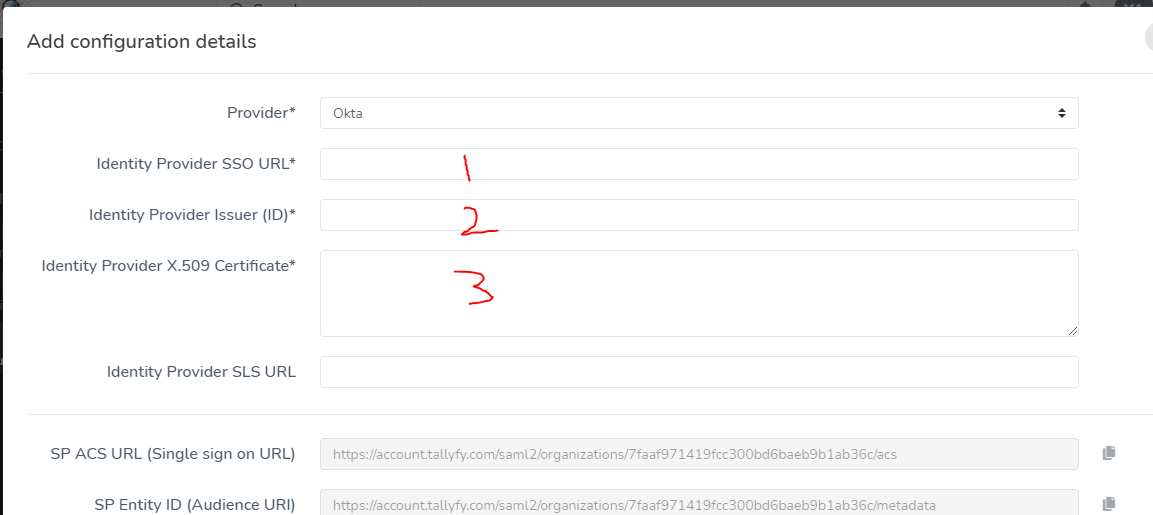
Once Tallyfy Support confirms they’ve configured your SAML settings, it’s time to flip the switch:
-
Toggle the SAML activation switch to enable SSO for your organization

After you’ve completed the integration:
-
Get the Tallyfy login URL from the SAML configuration modal (Tallyfy Support provides this)
-
Share this URL with your team members who have access to the OneLogin application

When users access Tallyfy through this URL:
- Existing Tallyfy users get in immediately with automatic authentication
- New users? They’re provisioned in Tallyfy on their first login (yes, it’s that simple)
Running into authentication issues? Check these common culprits:
- Make sure the user has been assigned to the OneLogin application
- Double-check parameter mappings are configured with exact names - even a tiny typo breaks everything
- Verify the required attribute flags are enabled
- Confirm users are using the SSO URL (not the regular Tallyfy login page)
- Still stuck? Contact Tallyfy Support for help
Authentication > Integrate Microsoft Entra ID SSO
Authentication > Integrate Google Workspace
Authentication > Integrate JumpCloud SSO
Was this helpful?
- 2025 Tallyfy, Inc.
- Privacy Policy
- Terms of Use
- Report Issue
- Trademarks